The best ebike navigation systems on test – 5 devices go head to head
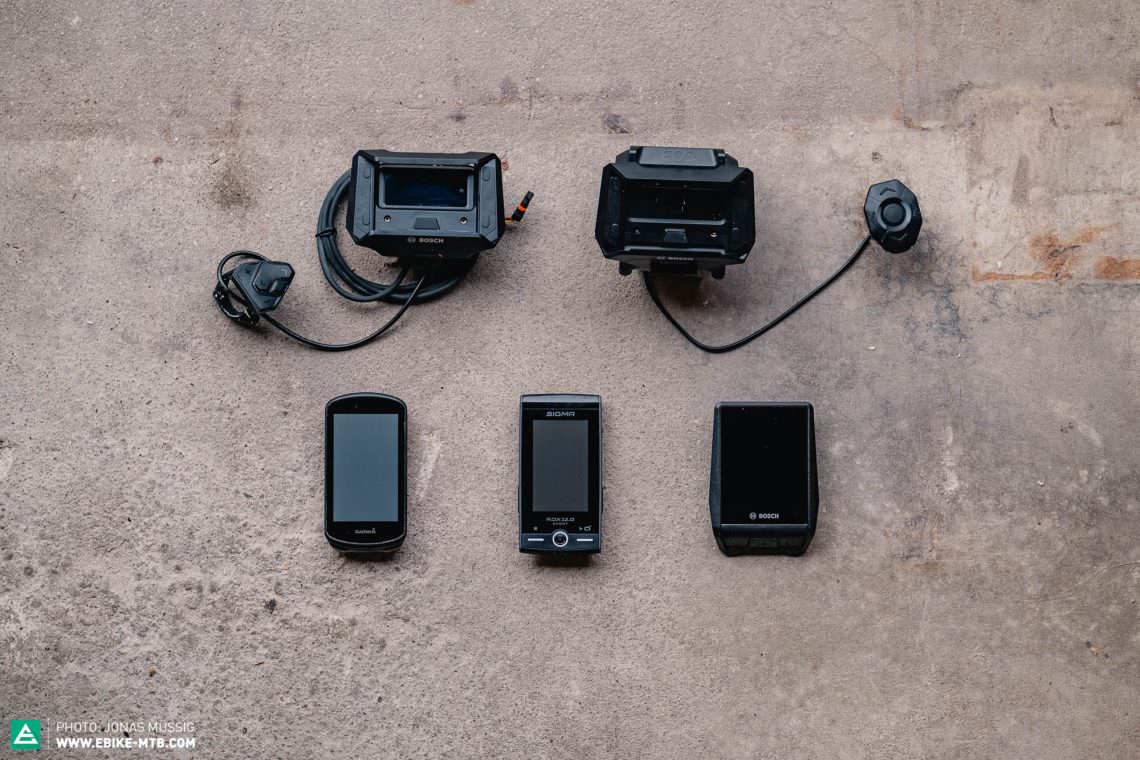
Exploring new paths, looking for trail adventures or planning rides: we compared the five best navigation devices for eMTBs so that you can ride secure in the knowledge that you’re on the fastest or most scenic route. Clever smartphone mount, external bike GPS computer or onboard eMTB computer? We found out which system works best and for whom.
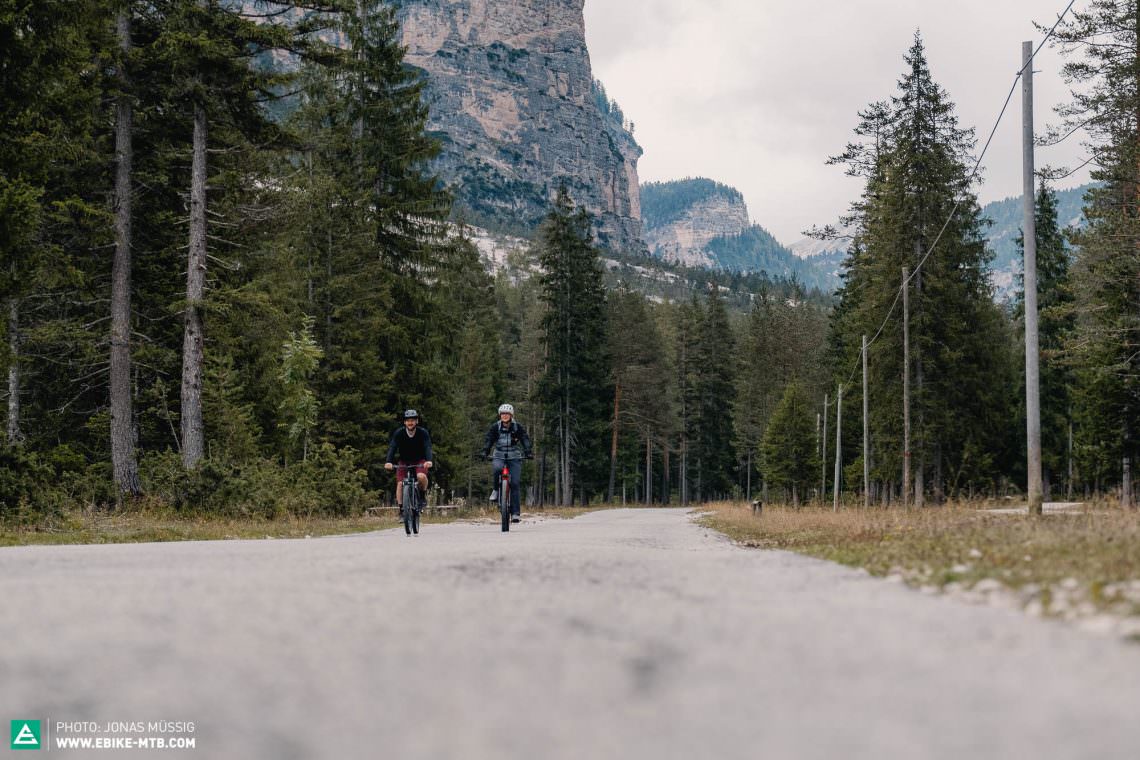
There’s no better way to experience the outdoors than on an eMTB and for us, it’s the epitome of adventure, enjoyment and riding pleasure. But it quickly stops being fun when you get lost. Even if you start right at your doorstep, aboard a modern ebike you can quickly find yourself far away from home and all your familiar surroundings. Navigation devices have become an indispensable part of life, whether it’s in cars or finding our way around town on foot. So why not have them on our eMTBs too? If you want to explore new paths without having to worry about finding your way back, a GPS device is a worthwhile investment. If you’re simply looking for the fastest route from A to B, you can’t avoid one either. There is a wide range of options, with everything from classic GPS devices, as you might be familiar with from road bikes to smartphones and eMTB touch displays with integrated navigation systems. However, not all of these options make sense on an eMTB. An overcrowded handlebar, not being able to connect with the ebike’s motor or unreliable navigation off the beaten track isn’t only annoying but also not in keeping with the times.
Table of contents
- What types of devices are there?
- The test field
- Navigation
- What else to look for in an eMTB navigation device
- The best eMTB navigation device of 2021
We tested five of the best navigation devices with different concepts and different software over the course of several months, exploring the limits of their navigation features on extended rides in South Tyrol, on trail adventures in the lower mountain ranges, while commuting and in everyday use. We’ll also tell you which device is suitable for which ebike motor and which software is ahead of the curve. Your smartphone will always find a useful place, either attached to the handlebar or stowed deep inside your backpack.


What types of devices are there?
Classic navigation devices are simply the next step in the evolution of the bicycle speedometer. They have gone through all the important developments of the last 20 years and, from a technical point of view, they’re hardly comparable with the speedometers that some of us had on our bikes as kids. You can use them on ebikes as well as analogue bikes. While their focus is clearly on navigation, their other functions are no less impressive. Besides all of the standard data points such as speed, cadence and altitude gain, they can be used as fitness trackers and personal trainers, feature integrated smartphone notifications and sound an alarm in the event of attempted theft. You can attach them to any handlebar but whether you can also use them to replace your ebike display depends on the manufacturer of the motor. Not all of the motors offer compatibility to allow third-party GPS devices to access and display data such as speed, cadence, battery level and support mode. Devices such as the SIGMA ROX 12.0 or the Garmin Edge 1030 Plus aren’t sold together with ebikes as they are aftermarket solutions from third-party providers.
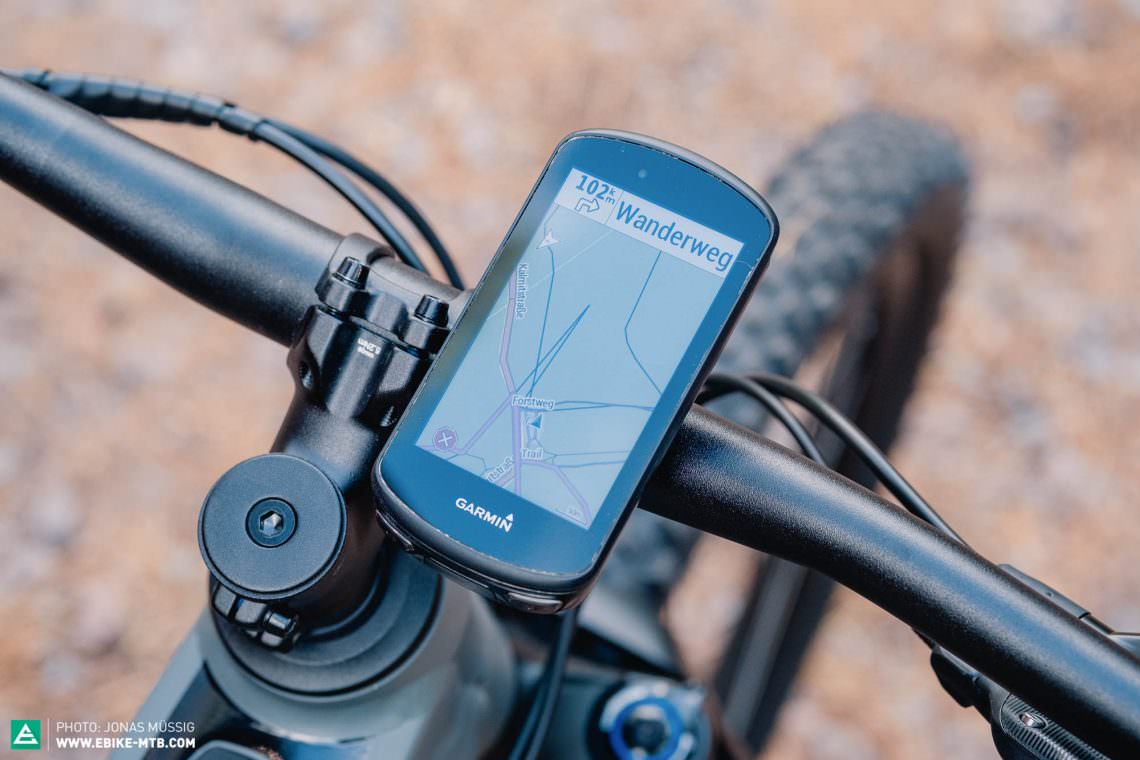
Why not resort to an ebike display with integrated navigation instead? There is currently only one ebike display on the market offering extensive and up-to-date navigation functions: the 2021 Bosch Nyon. This type of navigation system is an integrated part of the display that the ebike comes delivered with. You can have it retrofitted if it’s compatible with your bike, but can’t be moved between ebikes. The 2021 Bosch Nyon is more than just an ebike display. It’s an onboard control centre with a touch display, navigation functions and lots of other features, similar to what you’ll find in a modern car.
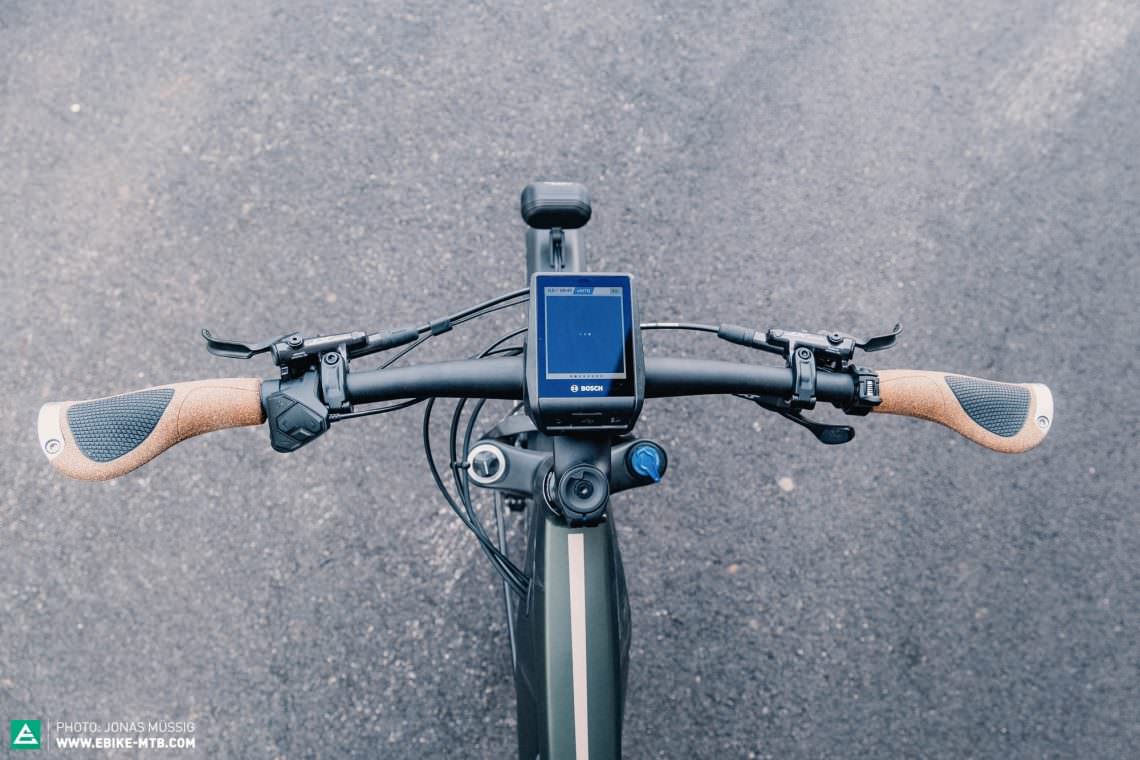
The third and currently most popular way to add navigation to an ebike is to use your smartphone. Either you attach your smartphone to the handlebar via a universal smartphone-mount or you might opt for a solution that couples your smartphone with the ebike motor. Currently, Bosch’s COBI.Bike Sport system or SmartphoneHub are leading the way here. These devices link your smartphone with your ebike via a Bluetooth connection. Other apps are able to display ebike data via a Bluetooth connection, turning your smartphone into an ebike display. However, Bosch’s systems go beyond that, fully integrating the smartphone with the ebike.
The test field

| Brand and model | Price | Size | Compatibility | Retrofittable |
|---|---|---|---|---|
| Garmin Edge 1030 Plus (Click for review) |
€ 599 | 58 x 114 x 19 mm | Bikes with ANT+ LEV profile or Bluetooth LE for full compatibility | yes |
| SIGMA ROX 12.0 (Click for review) |
€ 399 | 60 x 115 x 17 mm | Bikes with ANT+ LEV profile for full compatibility, sensors with ANT+ and Bluetooth | yes |
| Bosch Nyon 2021 (Click for review) |
€ 349 | 80 x 110 mm | Bosch | yes, we recommend having it installed by a Bosch dealer |
| Bosch SmartphoneHub (Click for review) |
€ 229 | 95 x 75 x 35 mm | Bosch Active Line, Active Line Plus, Cargo Line, Performance Line and Performance Line CX from 2020 | yes, we recommend having it installed by a Bosch dealer |
| COBI.Bike Sport (Click for review) |
€ 250 | 91 x 86 x 83 mm | Bosch ebike with Intuvia or old Nyon mount (BUI275) | yes |


Navigation
For most ebikers, it’s not about the destination but the journey to get there. The manufacturers of all the navigation devices on test have taken this to heart and added alternative routing options other than the simplest and shortest journey between points A and B. For example, you can select the ’easy’ option on the SIGMA ROX 12.0 which will calculate a route with a flatter profile instead of the shortest route. ‘Scenic’ route suggestions, like on the 2021 Bosch Nyon, or ‘recommended’ ones, like on the SIGMA ROX 12.0, guide the rider away from the main roads and highways onto designated cycle paths, taking detours if necessary. The navigation features of the 2021 Bosch Nyon, the Bosch SmartphoneHub and the COBI.Bike Sport system are easy to use. However, you can’t make any adjustments to the suggested path. To create custom routes with one of these three navigation systems, or add intermediate destinations en-route, you’ll have to import pre-planned GPX files or routes from the likes of Komoot.
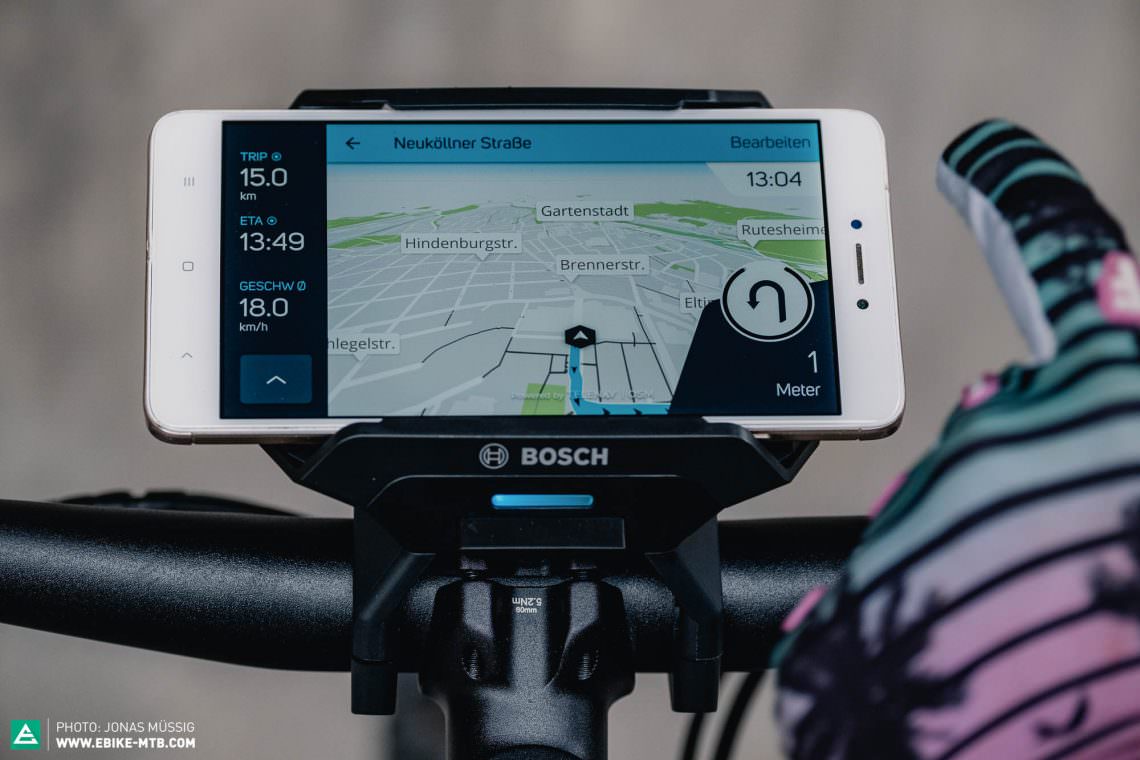
On the other hand, the Garmin Edge 1030 Plus allows you to tailor route planning to your preferences and the re-routing function can also be customised. The variety of options in the settings menu can be a little overwhelming at times. The SIGMA ROX 12.0 strikes a good balance between user-friendliness and the range of options. If necessary, it automatically re-routes while you’re riding and the route planning provides logical route options that are tailored to your profile. With a fully-fledged navigation function including curated route suggestions and a breakdown of route types, similar to what is offered by Komoot, none of the other devices on test are able to keep up. The good news is that all of the other devices can connect with third-party apps like Komoot for more detailed planning. The 2021 Bosch Nyon has a convenient range-based navigation feature which takes into account the battery level, the selected support mode, the distance to your destination as well as the elevation profile of your route, saving you from heading out on a long ride without enough charge. The SmartphoneHub and the COBI.Bike Sport system also compare your planned route with the available battery range, but they don’t take the route’s topography into account. If there’s a lot of elevation gain on your planned route, the battery might run out prematurely.
What else to look for in an eMTB navigation device
Battery life
If the navigation device is connected to the integrated ebike system, as with the 2021 Bosch Nyon display, it’s supplied with energy from the main battery and will last at least as long as your ebike does. A separate battery in the 2021 Bosch Nyon display ensures that you’re able to find your way home even if the integrated battery on your ebike has run out. The SmartphoneHub and the COBI.Bike Sport system also allow you to charge your smartphone from the main battery. The GPS cycling computer offered by Garmin and SIGMA are at a disadvantage here. If you don’t have an ebike with an integrated USB charging port like the Canyon Spectral:ON or Stevens E-Inception, you should be sure to charge your GPS before you head out or carry a power bank.
Acoustic signals
In addition to the display, the devices on test also use acoustic signals. Besides beeping to draw your attention to upcoming turns or directions, the Garmin Edge 1030 Plus also uses beeps as a warning for sharp hairpin bends. If you’re using your smartphone as a navigation device, such as the SmartphoneHub or the COBI.Bike Sport system, you can also get turn-by-turn voice directions. If you pair the Garmin Edge 1030 Plus with your smartphone, you can also get access to voice instructions if you have the required software installed. Of course, if you don’t like them, you can also turn acoustic signals off.
Display quality
All the devices on test have a brightness sensor that detects the ambient light and adjusts the display’s brightness accordingly. Nevertheless, there are big differences in the brightness, resolution and readability of the displays while riding. The Bosch Nyon display sets the standard here, closely followed by the Garmin Edge 1030 Plus. If you’re using your smartphone as a navigation device, the display obviously depends on the phone you’re using.

Theft alarm and anti-theft device
The COBI.BikeSport system and the Garmin Edge 1030 Plus both come with an alarm function. With the feature activated, if the device detects any kind of movement on the bicycle, it’ll sound an alarm. The Garmin also sends a notification to your smartphone, provided it is still connected via Bluetooth. The only device on test that has a special anti-theft feature for ebikes is the 2021 Bosch Nyon. If you purchase the premium “Lock” function from Bosch for € 10, all motor functions are deactivated as soon as you remove the Nyon display from the ebike. Until the uniquely linked Nyon display is reattached to the ebike, it can only be used as an analogue bike without any assistance from the motor. The Bosch Kiox display offers the same functionality but unfortunately, its navigation features are rudimentary at best. That’s why we didn’t include it in this test field.
Ebike compatibility
Your choice of possible navigation devices depends on which motor you’ve got. Modern bike GPS computers and smartphones can replace your ebike display if they’re able to communicate with the drive unit of your ebike. It may come as a surprise to many owners, but Bosch motors are blocked for third-party providers. To be able to read out data such as the support mode or the battery level via the navigation device, you are tied to Bosch-certified solutions or Bosch devices such as the SmartphoneHub or the COBI.Bike Sport system. You’ll be a lot more flexible if your ebike relies on the ANT+ LEV (Light Electric Vehicle) interface, as you’ll find on Specialized, GIANT and Shimano ebikes, or if it works with Bluetooth, such as the FAZUA system. In that case, chances are that a modern navigation device will be able to receive and display data from the motor, even if the device is from a third-party provider. The ANT+ LEV interface transmits data such as the support mode, the battery level and the estimated remaining range to the navigation device by default. The SIGMA ROX 12.0 and the Garmin Edge 1030 Plus both offer ANT+ LEV connectivity. The Garmin Edge 1030 Plus can also communicate with the FAZUA system, but unfortunately, the data you’ll be able to read is limited, showing either the speed and cadence or the power meter readings of cadence and rider output. The Bosch SmartphoneHub, the COBI.Bike Sport system and the 2021 Bosch Nyon are an integral part of the ebike system and therefore only work with Bosch motors.
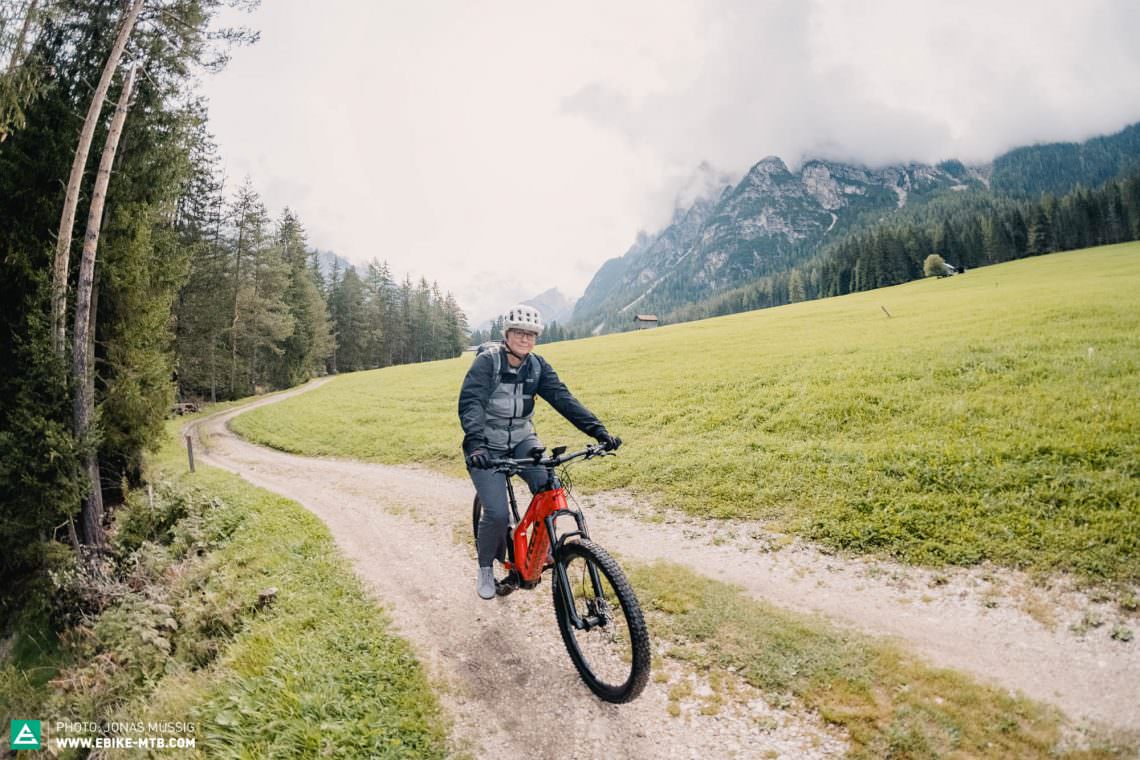
Maps
Navigation devices shouldn’t just help the rider find the fastest and, above all, the correct route to their destination. The sites and scenery along the way are just as interesting for some ebikers. If you want to go exploring, it’s not just the map that is of great importance but how it is incorporated into the route calculation. Does it allow you to distinguish what the path ahead of you might look like or do all routes look the same? Is a trail recognised as such and is it included in the route calculation? Another convenient feature is WiFi connectivity of the devices on test. This means that you can simply connect to your WiFi network at home and download maps for offline navigation – with the exception of the Garmin Edge 1030 Plus. You’ll have to connect the Garmin to a computer in order to make changes to the maps.
None of the devices on test are set-and-forget. This means that none of them will notify you when new maps are available and you’ll always have to check for updates yourself. Our tip is to use apps like Komoot for navigation. The maps there are always up-to-date. If the manufacturers of the navigation devices are given permission to access the movement history of their customers or if the community voluntarily uploads its routes to the various online platforms, you get so-called heat maps. Heat maps show frequently travelled routes. The system can then compare this data with the profile of the user and create tailor-made route recommendations. What has long worked for cars with Google Maps is also available for eMTBs with Garmin and Strava: if a frequently used route gets closed or a faster alternative opens up, the heatmap recognises this and recalculates the route, whether you’re in the city or on the trails.
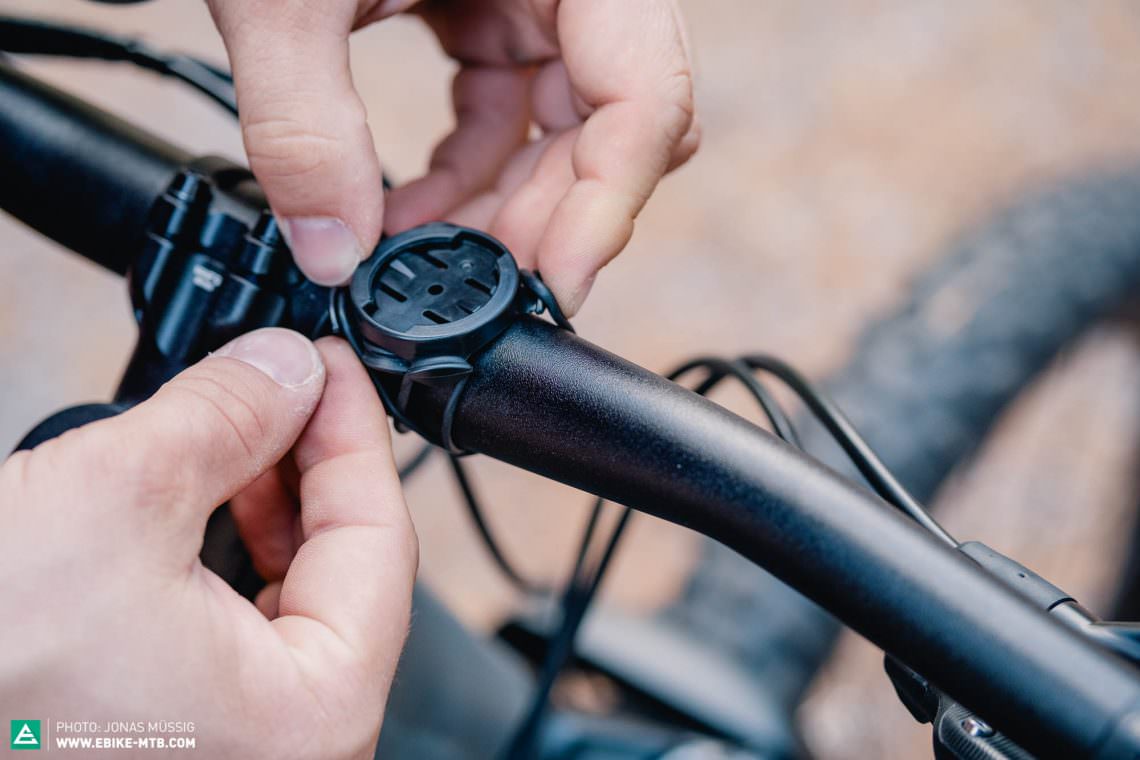
Installation
Mounting the GPS devices from Garmin and SIGMA is particularly easy. Even if you’ve got two left hands, you’ll be able to attach the devices to the handlebar using the instructions provided. The COBI.Bike Sport system is a simple retrofit solution. It can be attached to the bracket of a Bosch Intuvia or an old Bosch Nyon display. Retrofitting navigation devices that get connected directly to the ebike system, such as the Bosch SmartphoneHub and the 2021 Bosch Nyon, should be left to the specialists at your local dealer.
Processor performance
The performance of the navigation device’s processor plays an important role for smooth operation. The loading times when switching on and off, calculating a route and even zooming in on a section of the map are sometimes limited by the processor and this can cause a lot of frustration. Who wants to wait for the zoom function to react? Modern smartphones, such as those used for navigation with the COBI.Bike Sport system and the SmartphoneHub, are usually superior in this regard. Most modern smartphones are able to calculate routes to destinations that are hundreds of kilometres away within seconds, while the 2021 Bosch Nyon starts getting overwhelmed at distances of just 200 km and the Garmin Edge 1030 Plus takes several minutes to calculate routes that long. However, if the route is under 100 km, all devices on test will calculate the route in a few seconds.
Crash detection
In the event of a crash, either the navigation device itself or a connected smartphone can detect this and start a countdown for an emergency call. If no one stops the countdown after a crash, your emergency contact will be notified. However, this is only the case with the Garmin, Bosch SmartphoneHub and COBI.Bike Sport system. Garmin offer this function free of charge. With the SmartphoneHub and COBI.Bike Sport system you’ll be charged 40 € annually.
Touch display
A touch display makes scrolling and zooming on a map a lot easier than if you have to use buttons. With the 2021 Bosch Nyon display, Bosch SmartphoneHub and COBI.Bike Sport system, the zoom function can also be operated via the remote, so you don’t have to take your hand off the handlebar. A touch display also makes entering your destination a whole lot easier.
Additional features
In addition to navigation, some of the devices have a wealth of additional features. Besides recording a route, some devices can evaluate your training, issue training recommendations based on your previous performance or provide weather forecasts. The accelerometer inside the Garmin Edge 1030 Plus can even detect phases of weightlessness and uses additional data to determine the length of jumps. For football enthusiasts, the Goals function on the COBI.Bike app offers a live tracker of football scores, which get displayed on screen. You’ll have to decide for yourself how useful you find these functions and whether you need them.
Tops/Flops
Tops
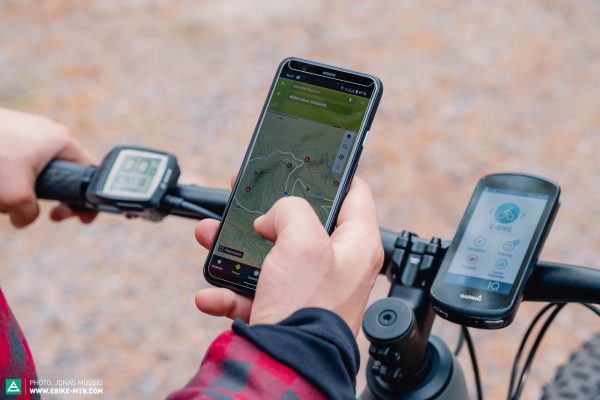
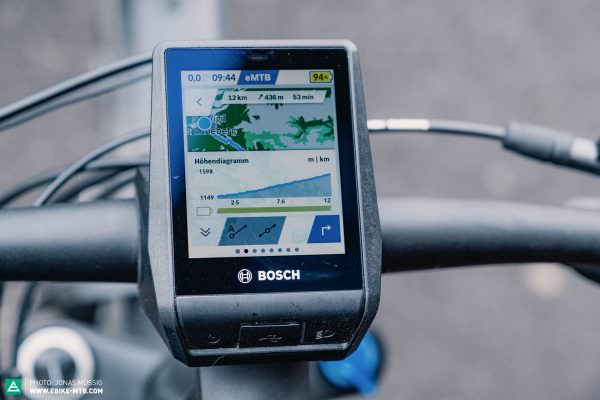
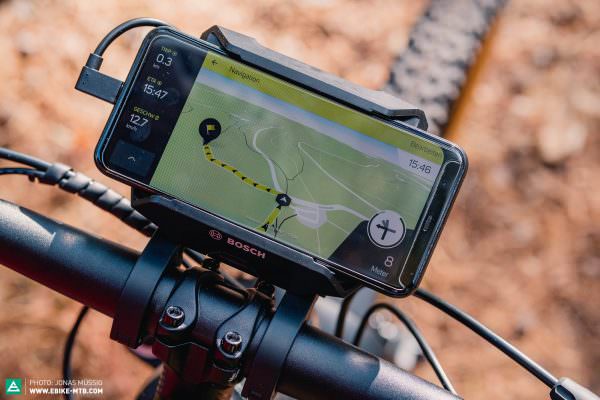

Flops
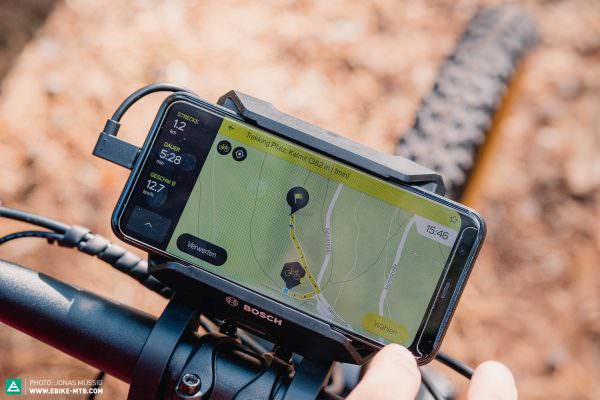

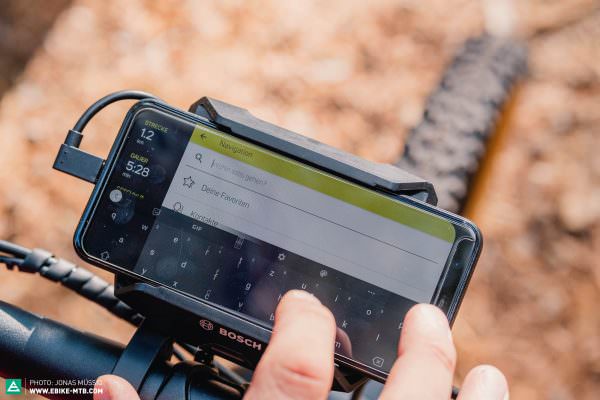
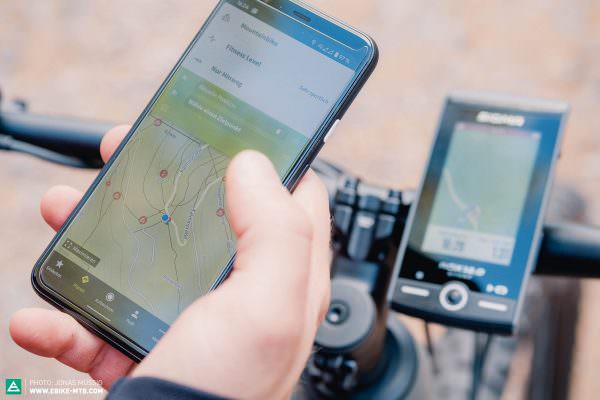
The best eMTB navigation device of 2021
The winner of our navigation special is the 2021 Bosch Nyon. It is unique in the test field in that it’s more than an ebike display with integrated navigation features – it is the next-level onboard computer, combining all the functions you need on an eMTB in one device. In terms of brightness, usability and added features, it is the benchmark. No other device on test is able to combine anti-theft protection and range-based navigation or respond so closely to the real needs of ebikers as the Bosch Nyon. It’s everything you need in one device, you’ll always have with you on the bike and you don’t ever have to charge it. With the 2021 Bosch Nyon you don’t have to worry about the GPS, the GPS takes care of you! It doesn’t get much better! For € 350, the Bosch Nyon aftermarket kit is also the most attractive package on test in terms of value for money. The downside: unfortunately, it only works with Bosch motors.
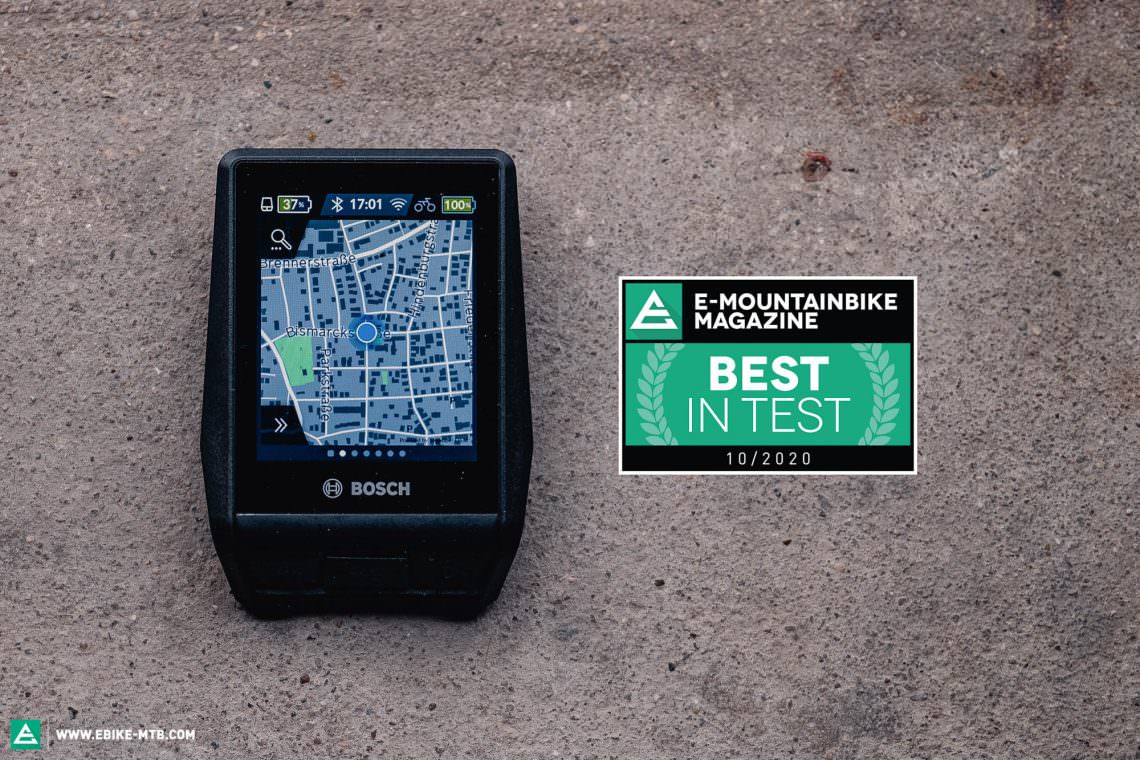
Other manufacturers still have some catching up to do when it comes to onboard navigation integrated into the ebike display. The best third party option is the Garmin Edge 1030 Plus. It sets the tone among modern external GPS devices and shows what’s possible. It is compatible with many ebike systems and can double as your ebike display to an extent. The high-quality hardware, the easy-to-read touch display and the long-lasting battery make the Garmin the benchmark among third-party solutions! Navigation can be tailored to your needs and allows you to synchronise with Komoot, Trailforks, Strava and other options. Once you familiarise yourself with the wealth of additional functions and apps from the IQ store, the Garmin Edge 1030 Plus is capable of a whole lot more than just navigation.
If you want to use your smartphone as an ebike display or navigation device, Bosch’s SmartphoneHub and COBI.Bike Sport system offer clever ways of connecting your smartphone with your bike and turning it into a command center. If you feel like leaving your smartphone at home, the minimalist display on the SmartphoneHub will keep you informed about the most critical data on your eMTB. The only disadvantage about these systems is that you’ll need the COBI.Bike app.
All navigation devices in test
Bosch COBI.Bike Sport (Click for review) | Bosch Nyon (Click for review) | Bosch SmartphoneHub (Click for review) | Garmin Edge 1030 Plus (Click for review) | SIGMA ROX 12.0 (Click for review)
Did you enjoy this article? If so, we would be stoked if you decide to support us with a monthly contribution. By becoming a supporter of E-MOUNTAINBIKE, you will help secure a sustainable future for high-quality cycling journalism. Click here to learn more.
Words: Rudolf Fischer Photos: Jonas Müssig, Robin Schmitt








